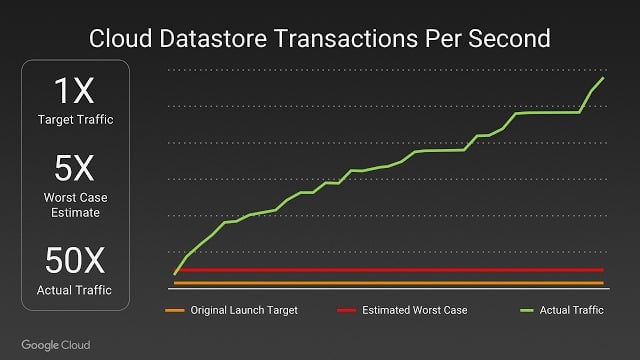Pokémon Go’s traffic crushed even Google’s infrastructure as it surged 50 times higher than expected
Remember how every time Pokémon Go launched in a new country, the game would become unavailable for swathes of new players? It was because of ”the servers,” people said, that were struggling to cope with the flood of new players. Now Google, which provided those servers to Niantic Labs, Pokémon Go’s creator, has revealed just how big the flood was, compared to what was anticipated:


Remember how every time Pokémon Go launched in a new country, the game would become unavailable for swathes of new players? It was because of ”the servers,” people said, that were struggling to cope with the flood of new players. Now Google, which provided those servers to Niantic Labs, Pokémon Go’s creator, has revealed just how big the flood was, compared to what was anticipated:

Luke Stone, director of “customer reliability engineering” at Google Cloud, wrote a blog post detailing some of what went on behind the scenes as Pokémon Go became the fastest grossing app of all time after its release on July 6. The chart above, from Google’s cloud database, shows that the actual traffic generated by the game surpassed Niantic Labs’ planned traffic target at launch by 50 times, and its loftiest expectations by 10 times.
“Not everything was smooth sailing at launch! When issues emerged around the game’s stability, Niantic and Google engineers braved each problem in sequence, working quickly to create and deploy solutions,” Stone wrote.
The chart above is indexed, so it doesn’t reveal the actual figures involved. But third-party firms have estimated the game peaked at 45 million daily active users, which, if accurate and applied to the data from Google Cloud, suggests that Niantic’s launch target traffic was about 900,000 users, or 4.5 million users if things went really well.
Stone writes that extra capacity was “seamlessly provisioned” so that Niantic could stay ahead of the explosive demand. Given the number of complaints over outages and other bugs during launch, it seems it wasn’t quite seamless.
Interestingly, Stone’s unit—Google Customer Reliability Engineering—was created just in time for Pokémon Go’s launch. Niantic was its first customer. The unit is comprised of Google engineers who embed with customers to figure out what cloud resources they need to get their products going. Seems creating it was a smart move.